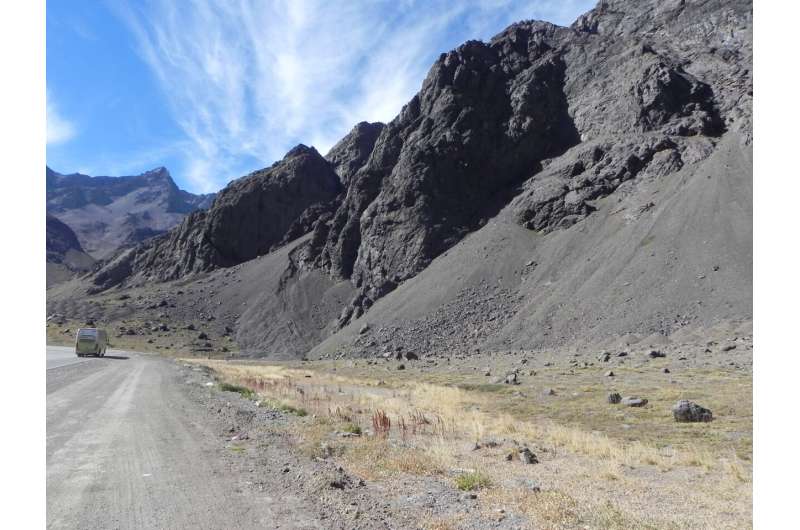This article has been reviewed according to Science X's editorial process and policies. Editors have highlighted the following attributes while ensuring the content's credibility:
fact-checked
peer-reviewed publication
proofread
Quantifying the risk associated with rockfalls in the Andes

High mountain regions often face a multitude of natural hazards, the combined effects of which, known as "cascading hazards," can have serious consequences for infrastructure and urban areas.
However, there is a lack of tools to prevent and quantify these complex risks. That's why researchers across several countries have collaborated to develop an innovative way to calculate rockfall risk over large areas of very high mountains affected by high seismic activity. The major challenge of this work? Quantify these risks in a detailed and exhaustive manner.
This new method addresses this challenge in an innovative way, taking into account a wide range of exposed assets (people, dwellings, flowing vehicles, lifelines) and considers both the rockfall risk associated with earthquakes and the "common" rockfall risk resulting from erosion and local climatic conditions.
Earthquakes account for nearly 60% of the rockfall risk in the Andes
For example, one of the major findings of this study is that nearly 60% of the total rockfall hazard in the Andean zone studied is attributable to seismic activity. It is, therefore, crucial to consider the rockfall risk when large earthquakes occur in this area.
This method has been successfully tested in the Andes Mountains in Chile, providing promising results. These results show that it is now possible to assess the risk of rockfalls in the mountains in a more comprehensive manner.
Experts can now identify which places are most at risk, such as villages and stretches of roads that are exposed. This advance represents an important step towards better prevention of rockfalls in mountainous areas, offering valuable tools to anticipate and reduce the consequences of these events on infrastructure and communities.
The work is published in the journal Risk Analysis.
More information: Manon Farvacque et al, Holistic rockfall risk assessment in high mountain areas affected by seismic activity: Application to the Uspallata valley, Central Andes, Chile, Risk Analysis (2023). DOI: 10.1111/risa.14239
Journal information: Risk Analysis
Provided by INRAE—National Research Institute for Agriculture, Food and Environment




















